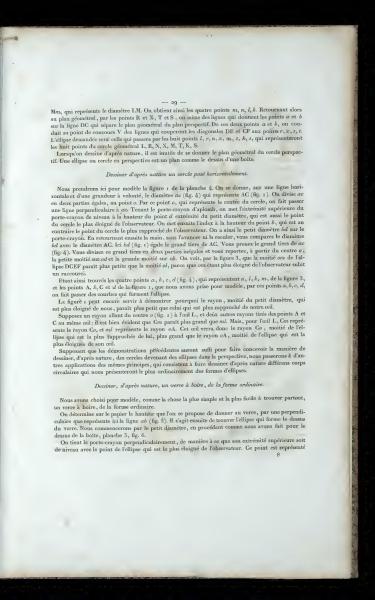Drawing from Nature: Page 29
The text describes the geometric method for drawing a circle in perspective, particularly focusing on the ellipse that results from observing the circle at an angle. Initially, by understanding the geometric relationships and using points of reference on a plane, the artist can translate the true form of a circle into its perceived form as an ellipse. The text further details practical steps using a model from a specified plate, guiding the artist in accurately positioning and aligning a circle on a horizontal plane.
When drawing from nature, such as a glass, one needs to consider the vertical arrangement of the object and its parts, especially focusing on achieving the precise appearance of its circular top as an ellipse. This involves careful measurement and drawing of the ellipses that form the rims in perspective, respecting the various visual and geometric principles.
Translation Notes
Ellipse: In this context, an ellipse represents the shape an object appears when viewed at an angle rather than its actual circular form.
Perspective: A method of depicting three-dimensional forms on a two-dimensional surface, particularly managing how circles appear as ellipses.
The text from page 29 provides instructions on drawing circles and ellipses in perspective, explaining the geometric transformations involved when an object is viewed at an angle. It outlines the method of applying these techniques to drawing a drinking glass by accurately representing its circular top as an ellipse. The instructions emphasize understanding and employing perspective principles to achieve realistic representations.
